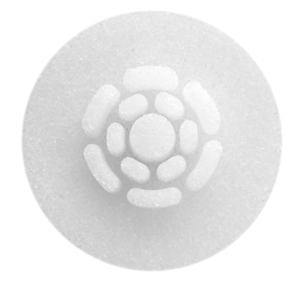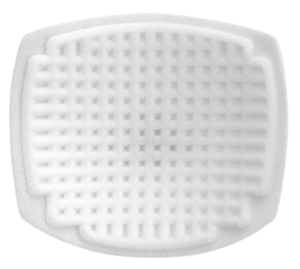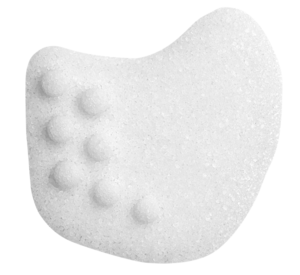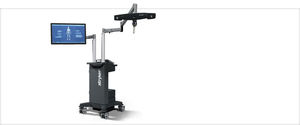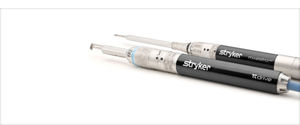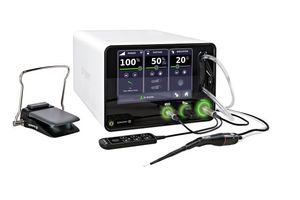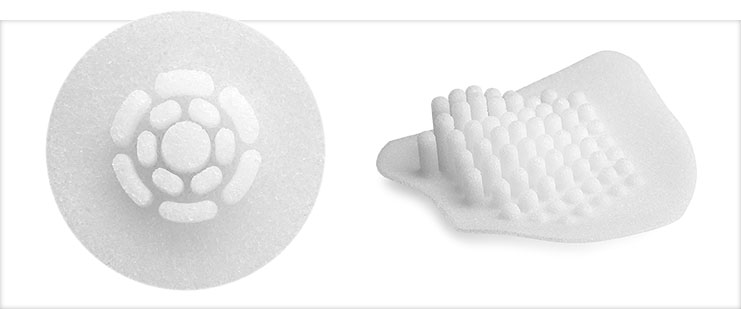
MEDPOR Neuro surgery
Overview
MEDPOR has been a trusted name in the industry since 1985, with hundreds of thousands of procedures performed, and hundreds of published clinical reports in reconstructive, cranial, oculoplastic, and cosmetic applications.
Our MEDPOR product line provides you an array of porous polyethylene solutions for your reconstruction and augmentation needs. We understand that bio- compatibility characteristics of implants are paramount to help surgeons achieve positive patient outcomes. The omni-directional pore structure of our polyethylene implants may increase implant acceptance by allowing the patient‘s native tissue to integrate with the implant. In addition to our comprehensive line of stock MEDPOR implants, we offer CT-based patient specific implants, putting the implant design in your hands.
Proven. Adaptable. Comprehensive.
Features and benefits
Proven material
More than 400,000 procedures have been performed with MEDPOR Biomaterial, with more than 350 published clinical reports in cranial, reconstructive, oculoplastic and cosmetic applications.
Adaptable
If desired, MEDPOR material may be cut and shaped to fit patient and surgeon needs.
Comprehensive portfolio
The MEDPOR Neuro product line consists of implants to fit individual patient needs.
MEDPOR TITAN
The MEDPOR TITAN line combines high-density polyethylene sheets and titanium mesh in a single implant for increased flexibility, shape retention, radiographic visualization and strength.1
Clinical evidence
OBJECTIVE
Reconstruction of pterional and temporal defects after frontotemporal (FT) and orbitozygomatic (OZ) craniotomy is important for avoidance of temporal hollowing, maintaining functional restoration, and achieving optimal cosmesis. The objective of this study is to describe our experience and cosmetic results with pterional reconstruction after FT and OZ craniotomy with the Medpor Titan implant.
METHODS
Ninety-eight consecutive patients underwent reconstruction of pterional and temporal defects after FT and OZ craniotomy using the Medpor Titan implant. The implant was shaped to recreate the pterion to provide coverage for the cranial defect and to bolster the temporalis muscle to prevent temporal hollowing. The implant was then secured to the bone flap with titanium screws. Cosmetic evaluation was performed from both surgeon's and patient's perspective.
RESULTS
Of 90 patients who underwent cosmetic assessment at the 3 month follow-up, temporalis asymmetry was noticed subjectively by three patients and noted in 7 patients by the surgeon. Orbital asymmetry was not noticed in any cases by either surgeon or patient. Overall patient satisfaction was found in 89 of 90 patients (98.9%). There were no cases of temporal hollowing. One patient had a delayed wound infection, and one had an inflammatory reaction that required removal of the implant.
CONCLUSIONS
Our technique using the Medpor Titan implant is a fast and effective method for pterional reconstruction after FT and OZ craniotomy with excellent cosmetic results and patient satisfaction. The implant combines the advantages of both porous polyethylene and titanium mesh, including easy custom-shaping without sharp edges, structural support and relatively lower cost.
References:
1: Holck, D., Foster J., and Dahl T., “Custom Shaped Porous Polyethylene-Titanium Mesh Orbital Implants for Internal Orbital Floor/Medial- Wall Fracture Repair” ASOPRS 37th Annual Fall Scientific Syllabus, pp190, November 15-16, 2006
CMF-WC-52_Rev. None_18991

